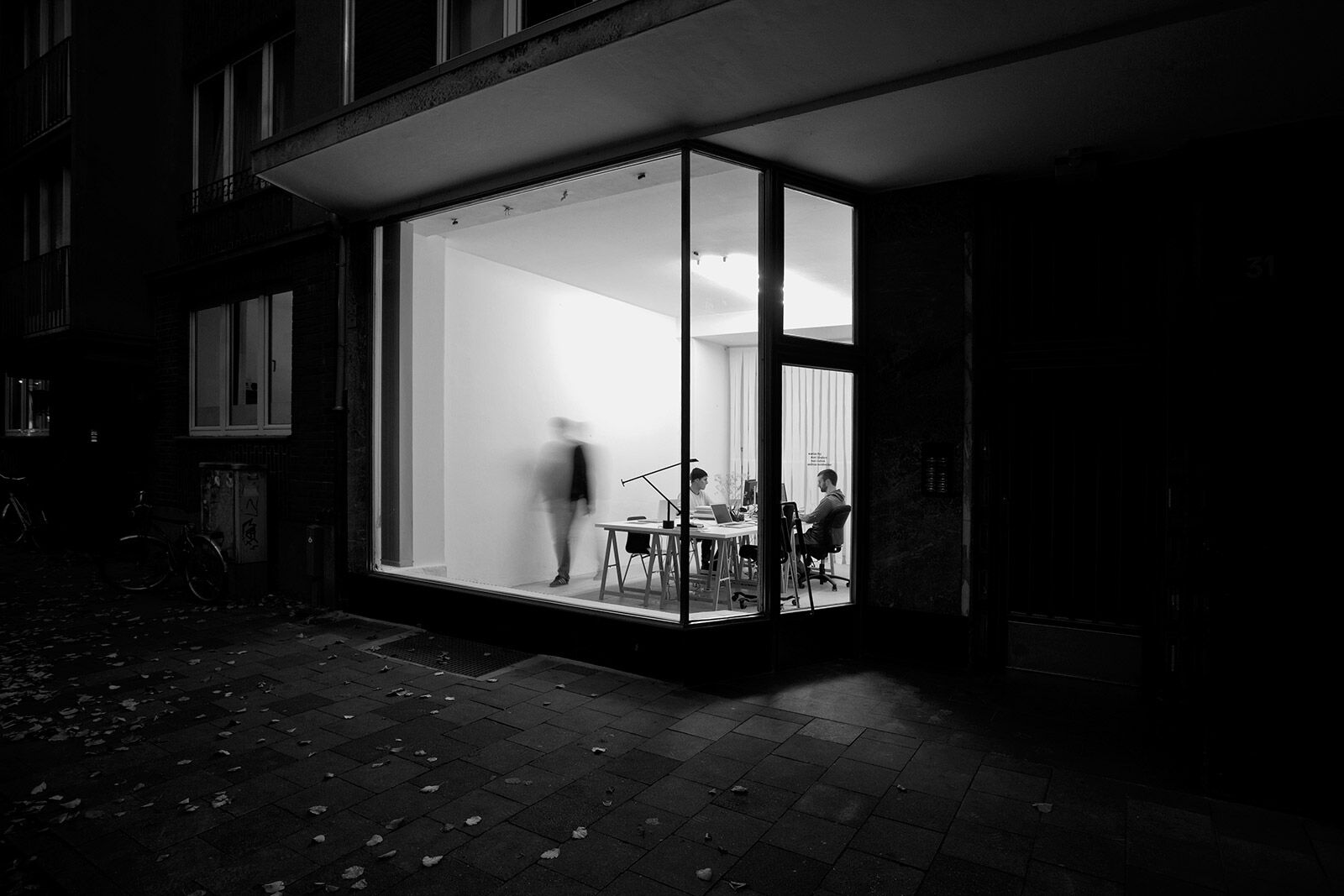From the classroom studio to the real world studio
About the beginnings of g31
Grey, rough concrete. A facade that looks like it came out of the 1950s, disfiguring the historic city center in place of the old buildings destroyed in the war. Inside, cold, glaring neon lights flicker from glowing fluorescent tubes. Anyone who has ever had the pleasure of getting to know the Golzheim campus of the Düsseldorf University of Applied Sciences (HSD) up close may have already guessed that I’m not describing a maximum-security prison, but the old location of HSD’s Design department. The campus itself is a beige-brown non-place with the typical charm of a government tax office. These surroundings would be the perfect backdrop to a dystopian future where bleak design prevents stimulating any creative thoughts. Under these, not quite Bauhaus-like conditions, is where I met the other two founders of g31 while we were studying communication design.
For a few semesters, I managed to work in the dreary building I described above, but towards the end of my studies, I realized that if I wanted to write an outstanding final thesis, it had to be done somewhere more inspiring. It was clear to me that if I stayed, the sad mood of the building would hinder my ability to perform at my best. To prevent this, I rented a nice little office space in Düsseldorf’s wonderful Unterbilk district. Here, besides the opportunity of being able to think more clearly, there was plenty of daylight and exchange with the surrounding neighborhood – especially thanks to the huge window out front. The rent was initially 450 euros, which is pretty pricey for a student trying to write their thesis. So, I equipped the room with a few desks and rented the remaining workstations to fellow students and shared the costs with them.

After several constellations of different people renting out a sunny place to work, my friends – the two other g31 co-founders Marc and Paul – shared the space with me. As time went by, we transitioned from student projects to commercial projects while operating as a loose association of freelancers. To a certain extent, we are still operating under these principles – our offices still function like Co-Working Spaces, where specialized freelancers work with us, or on their own projects, developing communication design solutions. Thanks to this in house flexible network of experts, we are able to handle even the most challenging projects together.
During our studies, we developed a habit of pinning our designs all over the office walls to keep track of ongoing projects. We continued this habit in our professional lives, which due to the large windows in our office, sparked the curiosity of one of our neighbors. After scheduling a meeting to get to know him better, we found out that he was the managing director for a medium-sized IT-provider (ELEMENTS) and was looking for a new design agency for his company. This serendipitous meeting resulted in all three co-founders coming together under the »g31« umbrella to develop a comprehensive new brand identity, form the brand strategy and design system, corporate website, and trade fair stand, for our neighbor. The success of the project was a proof of concept of our abilities as an agency and a way to credibly convey to any future potential clients that we can successfully develop brand communication, holistically, at a high level, and across all media.
»We realized that we didn’t need the rigid structures of a large agency apparatus to achieve good results.«
The success of the ELEMENTS project also helped us gain more confidence in our abilities, which is something you can certainly use at the beginning of starting your own design studio. We also realized that we didn’t need the rigid structures of a large agency apparatus to achieve good results. We save time, money, and energy avoiding bloated processes and redundant communication loops, allowing for considerably more efficient work if we remain small. Additionally, our size helps ensure productive friction between our clients and our designers, leading to more satisfying results and saving a lot of frustration by avoiding unnecessary complexity.

We consciously decided that we want our agency to remain small, agile, and flexible. To date, we have no permanent employees and rely exclusively on an outstanding network of freelancers on a project-oriented basis. Our team consists of specialized experts we can call upon according to the specific requirements of each project. This type of collaboration not only ensures more efficient project teams but also helps maintain flat hierarchies and independence amongst our team. No team member has to distinguish themselves from others, and nobody has to take on so-called »undesirable assignments« to support expensive administrative overhead. The combination of these decisions makes sure that everyone involved enjoys their work and that we only take on meaningful projects for people that we like.

